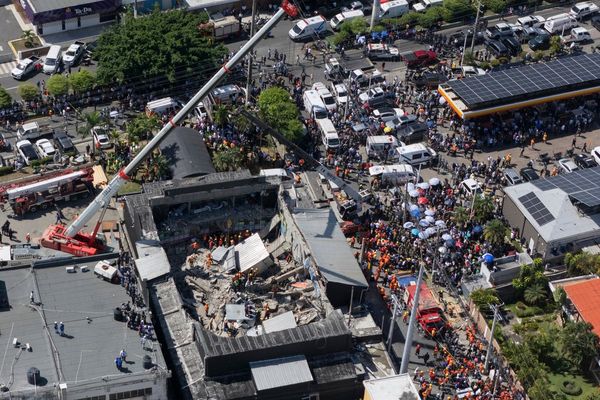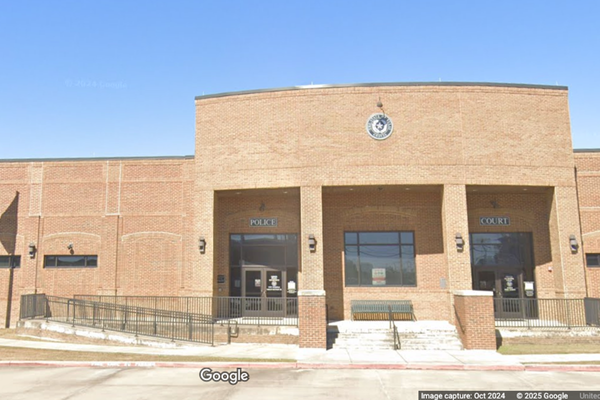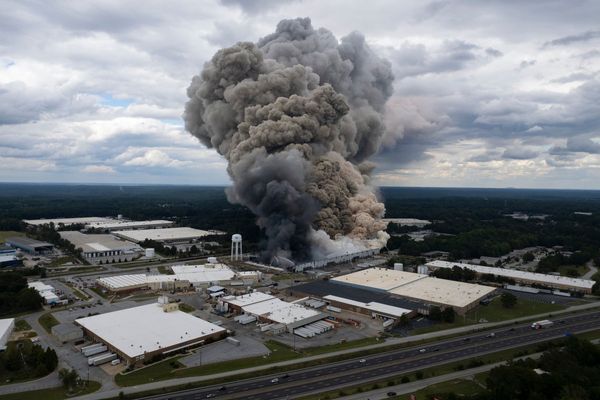
Recently the asteroid 2024 YR4, which is expected to pass Earth in 2032, was calculated to have a 1 in 83 chance of striking our planet. Then a week passed and suddenly there was a new headline: Asteroid 2024 YR4 was now believed to have only a 1 in 43 chance of striking our planet — the highest odds ever recorded for a space rock to hit our planet. Later the space rock fluctuated again, this time to a figuratively and literally astronomical 1 in 59,000 chance for impact.
In short, asteroid 2024 YR4 went from breaking records for known threatening asteroids to being a near-zero threat. At some point in the near future, this risk may be out of date.
The rock is 130 – 300 feet across (40 – 90 meters), meaning if such a collision were to occur, it would at the very least cause an airburst, shattering windows and infrastructure if it took place near a large city. The impact would be much less damaging if it occurred over the ocean, as asteroid 2024 YR4 is not large enough even at the outer range of projections to trigger a tsunami.
Even so, most humans want absolute zero certainty rather than near-zero likelihood in their disaster forecasts. Reality does not instill the same confidence one sees in sci-fi depictions of scenarios in which near-Earth objects like asteroids and comets approach our planet. In “Deep Impact” and “Armageddon,” astronauts know for sure that our planet is in danger, how much time they have to solve the problem and how to use nuclear weapons to blow up those dangerous near-Earth objects before they wipe out all life as we know it.
Yet according to Richard P. Binzel, a professor of astronomy and planetary science at the Massachusetts Institute of Technology who invented the Torino Impact Hazard Scale for measuring these space rocks, we should not think in terms of conclusive eventualities and solutions on this issue.
Binzel literally created the system scientists and ordinary people alike utilize to assess the threats posed by near-Earth objects on a scale of 0 (no threat) to 10 (will definitely hit Earth and destroy all life). Because the sky is so vast and our knowledge of it is so limited, the scale is not capable of doing anything more than operating within probabilities. This way the Torino scale allows our species to honestly know what we are dealing with, on a mathematical level, as we become aware of the increasing number of variables pertaining to a given asteroid or comet.
We will need any information we can get. Should our species in our lifetimes ever be so unlucky as to actually face a potentially apocalyptic near-Earth object, Binzel noted that the elegant solutions depicted in cinema are far, far from what we would really have at our disposal.
This interview has been edited for clarity and length.
How did you develop the Torino Scale?
Once upon a time, if you go back to the beginning, it would be Eugene Shoemaker, who was studying craters. He was going to be an Apollo astronaut but got washed out [Shoemarker developed Addison’s disease, an endocrine disorder], so he studied craters. He's the geologist that determined that the Meteor Crater in Arizona was a crater by finding minerals underneath the bottom of the crater which could only have been formed by a high-heat, high-intensity shockwave, which is an impact crater. And so Shoemaker began wanting to know what was making craters on the Earth, on the Moon. He transformed himself from a geologist to an astronomer and began searching for these objects in the 1970s.
I actually worked as a summer intern for Shoemaker in 1980. I began focusing on, or at least being aware of, working in the field of near-Earth objects as far back as 1980. As we were discovering these objects and surveys that Shoemaker was doing, and then others came along, we would get to the point where we would discover an object that had a non-zero probability of striking the earth. Could be one-in-20,000, one-in-60,000, just a number that was really small, but not zero. And so astronomers were perplexed: What do we do with these? Do we keep these objects secret until we get enough data and can make it go away, and then we don't have to upset anyone?
The problem with that is twofold. One is, the data, the observations are always public, and so anyone who couldn't read the listing of asteroid observations could do these kinds of orbit solutions themselves and declare it to the public. Secondly, the sky is free and open to everyone, so it doesn't seem right to ever not tell you to be public about what you find in the sky. As we were getting to the point of finding objects that could pose a threat to Earth, or at least for which we could not rule out some small chance of striking Earth on a distant date, we had no set way of communicating. It would be a little bit of a Tower of Babel, with different astronomers saying different things.
Not that the numbers were different, but they would express themselves in different ways, and that could be very confusing to the public. This was the motivation for finding a common communication system, a common scale that we could put into context any newly discovered object. And so this now goes back to 1995 when a guy named John L. Remo brought together a conference at the United Nations for people to discuss the discovery and calculation of orbits of asteroids coming near the Earth. And that's where I presented the first concept of a common language or common scale. I called it a hazard index. That first presentation in 1995, it was a zero-to-five scale, and it generated a lot of discussion, but not a lot of enthusiasm.
So I carried the proposal forward, took a lot of input from my colleagues, from science journalists, in terms of what could we do that would make a communication system better. From that I revised the proposal to a 10-point scale, added some broad characterizations for the different categories of what merits attention by astronomers, what would be an actual threat, and then what would classify as a certain collision.
That's the lower limit of categorizing objects on the Torino Scale. So a small object that's discovered that's going to disintegrate in the atmosphere, or maybe land a few pieces on the ground, is zero on the Torino Scale, even if we're certain it's going to hit.
So where's the bottom limit? And then at what probability does something become interesting? For example, on average in any given year, an object the size of 2024 YR4 has perhaps a one-in-a-thousand chance of striking the Earth or taking us by surprise. That's the level at which it would become a one on the Torino Scale: If we discover an object and it has a probability higher than just sort of the average background of being taken by surprise in any given year. Anything under four [on the scale], I wouldn't worry about.
What do you think of the various scientific theories about how we could deflect or otherwise protect ourselves from near-Earth objects? Which ones do you think are viable and which do you think are more fanciful?
The most important thing about near-Earth objects is to find them early. The earlier you have, or the more years or more decades you have to find an object, the more options you have such as a deflection, which is easiest to do. The more years you have, the tinier the nudge you need to make sure the objects will miss the Earth. At the moment, that's the capability we have, or the capability we've tested is a deflection technique, to nudge an asteroid slightly off course. That's why these new surveys are actually important because the sooner we start completing the inventory of what's out there, the more time we'll have, in case there's some object out there with our name on it.
Do you believe that, aside from the near-Earth objects that have made the news, there are other bodies out there we should be concerned about?
There are thousands and thousands of objects like 2024 YR4 and smaller that are out there. We simply need to do a thorough job of cataloging them as the first step towards making sure that we are never taken by surprise, by any sizable object.







